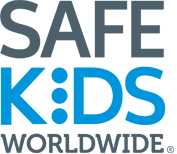New report reveals 1 and 2 year olds account for 53 percent of medicine-related calls to poison centers. 15-19 year olds are 6-times more likely to have serious outcomes.
Washington, D.C. – Nearly half of the 1.34 million calls to poison centers for children each year are related to medicine. In fact, every day, there are more than 1,100 calls about a young child getting into medicine or getting too much medicine. While those numbers are alarming, the most surprising insight from a new study by Safe Kids Worldwide reveals that teens are also at risk for unintentional medicine poisoning. For example, the percent of 15-19 year olds experiencing a serious outcome is more than 6-times greater than the percent for 1-4 year olds.
In a new report, “Medicine Safety for Children: An In-Depth Look at Calls to Poison Centers,” Safe Kids Worldwide, in partnership with the American Association of Poison Control Centers, analyzed more than 547,000 calls to poison centers to better understand what types of medicine little kids and teens are getting into and how it happens.
What is leading to the more severe incidents with teens? Teens in charge of managing their own medicine can make mistakes. There are about 10,000 emergency department visits a year for medicine overdose by adolescents self-administering over-the-counter medicine. Examples include forgetting to take medicine and then doubling up, taking two medicines with the same ingredient, and taking the wrong medicine. Medicines that ranked high in calls to poison centers that resulted in serious medical issues include those used to treat mental health conditions or attention deficit hyperactivity disorder (ADHD).
What medicines are most often involved for little kids? For children under age 4, the most common medicines kids get into are ibuprofen, multivitamins and diaper care and rash products. It’s easy to think that these everyday over-the-counter items are not as dangerous, but they can be very harmful if taken the wrong way. Iron and calcium in multivitamins can be poisonous if too many are taken.
It’s also interesting to learn how these little children are getting into medicine. A 2013 Safe Kids study revealed that in 43 percent of emergency department visits resulting from young children getting into medicine, the medicine belonged to a grandparent, aunt or uncle. Most frequently, children get into misplaced drugs found on the ground, on the nightstand, or in a purse.
“I encourage everyone to program the Poison Help line into your phone, 1-800-222-1222,” said Kate Carr, president and CEO of Safe Kids Worldwide. “This is a tremendously valuable service: it’s free, it’s available 24/7, and you will be talking to the nation’s poison experts. It’s far better than going online to find help.”
“Our nation’s 55 poison centers play a crucial role in keeping Americans safe by providing poison prevention and free, expert information and advice,” said AAPCC Executive Director Stephen Kaminski, JD. “In addition to the public, emergency clinicians and pediatricians rely on poison center professionals to help treat their patients. In fact, about 20 percent of all poison center exposure calls come from health care providers. It’s good to know that expert help is just a phone call away when the unthinkable happens.”
“We want every parent to know what to do in case of an emergency,” said Carr, “but even more important is to take a few precautions now to prevent these frightening emergencies from ever happening.”
Safe Kids Worldwide encourages every family to take these steps.
TOP TIPS FOR PARENTS OF TODDLERS
Put all medicine up and away and out of sight, including your own. Make sure that all medicine and vitamins are stored out of reach and out of sight of children. Consider places where kids get into medicine, like in purses, counters and nightstands.
Consider products you might not think about as medicine. Most parents store medicine up and away - or at least the products they consider to be medicine. You may not think about products such as diaper rash remedies, vitamins or eye drops as medicine, but they actually are and need to be stored safely.
Use the dosing device that comes with the medicine. Proper dosing is important. Kitchen spoons aren't all the same, and a teaspoon or tablespoon used for cooking won't measure the same amount as the dosing device.
Write clear instructions for caregivers about your child’s medicine. When other caregivers are giving your child medicine, write clear instructions about what medicine to give, when to give it and how much to give.
TOP TIPS FOR PARENTS OF TEENS
Check in with your teens and talk about medicine they are taking regularly. Even teens who need to take medicine daily may make errors in dose or dosing frequency, so it is important to communicate with them regularly about taking medicine responsibly.
Teach your child how to read the over-the-counter drug facts or prescription label and the importance of following the directions. Be sure your teen knows that taking more than the recommended dose will not help them get relief any faster, and it could hurt them.
Communicate to teens the importance of only taking medicine that is meant for them. Taking medicine that belongs to someone else or misusing medicines (even over-the-counter medicine) can cause harm.
EVERYONE
Save the toll-free Poison Help line number on your phone: 1-800-222-1222. You can also put the number on your refrigerator or another place in your home where babysitters and caregivers can see it. And remember, the Poison Help line is not just for emergencies, you can call with questions about how to take or give medicine, concerns about plants, chemicals, carbon monoxide, bites, stings and more.
For more medicine safety tips, visit SafeKids.org
Download the report, infographic and video
Download tips on how to read a drug facts label
National Poison Prevention Week is March 15 – 21, 2015
